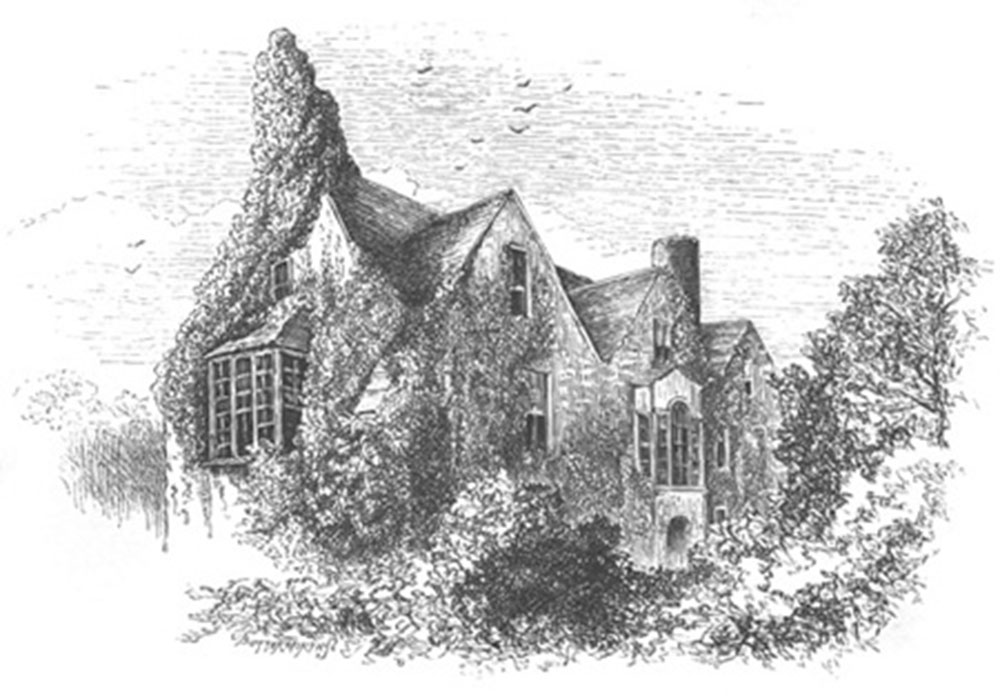Youghal - Irish Pictures (1888)
From Irish Pictures Drawn with Pen and Pencil (1888) by Richard Lovett
Chapter IV: From Dublin to Cork … continued
« Previous Page | Start of Chapter | Book Contents | Next Page »
Passing Carrigaloe and Monkstown, the steamer rounds a point and then enters one of the most commodious and also one of the loveliest harbours in the world. It is three miles long and two miles wide, and is completely landlocked, being entered by a channel two miles long and one wide. The expanse of water is broken by two islands, Haulbowline and Spike Island. The harbour runs east and west, and along its northern shore the town is built. The land rises abruptly to a height of several hundred feet, and a very easy climb will bring the visitor to one or other of many points of vantage. The enormous steamers of several of the Transatlantic lines call here, the harbour is generally busy with shipping, and seen under a sunny sky, few landscapes are so fair.
Six miles distant to the east is Cloyne, formerly the seat of an independent bishopric, but now associated with Cork. The famous philosopher Berkeley was Bishop of Cloyne from 1734 to 1753, and resided there for seventeen years. The glory of the town has departed; the old cathedral is used as a parish church, and there still stands a fine Round Tower, over 100 feet in height. Further still to the east, about twenty-six miles from Cork, is the town of Youghal, well situated on the hill overlooking the mouth of the Blackwater, the river whose valley forms one of the prettiest parts of Ireland. The town contains about 6,000 inhabitants, and is proud of its buildings and of its historical associations. The great church of St. Mary was for many years, like the Dublin cathedrals, in a ruinous state, and has, like them, been restored in recent years. A collegiate establishment was founded here by the Earl of Desmond in 1464, but the church dates back to the thirteenth century. The establishment consisted of a warden, eight fellows, and eight singing men, and the endowment was £600 a year. The house or college in which they resided is still in existence; but it is memorable from the fact that there once lived in it for several years a famous Englishman, Sir Walter Raleigh, and that he there entertained the great and gentle poet Edmund Spenser.
The house retains few traces of its ancient appearance; it is rather an Elizabethan manor. It was repaired in 1602 by Sir George Carew, and a few years later by Sir Richard Boyle, afterwards Earl of Cork, since it had been greatly injured in Desmond's rebellion. The interior is wainscoted with finely carved Irish oak. Tradition states that in the garden of this house Raleigh planted the first potato that grew in Ireland, and that under its yew-tree Spenser smoked the new and strange tobacco, and pondered The Faerie Queene. But it seems to have been too peaceful a home for the brilliant soldier and statesman, and although prominent for a time in the conduct of Irish affairs, his stay here was brief. Raleigh was present at the capture of Smerwick Fort in November, 1579; in 1584 he obtained the grant of a large tract of land in Munster; in 1589 he was again in Ireland, and on his return to England took Spenser with him, and introduced him to Queen Elizabeth. The same year saw the publication of the first three books of Spenser's masterpiece.
The Blackwater, like its Meath namesake, has a great reputation among the lovers of natural beauty. Following the river up some twenty or thirty miles, the Awbeg, one of the main tributaries, is reached. This stream is well known to anglers, and is noted for the fine trout it contains; it is also known to the readers of Elizabethan poetry as one of the streams described by Spenser in his Colin Clout's Come Home Again, which was penned in 1591, during his years of—to him—dreary banishment. The Mulla of this poem is the Awbeg of to-day:
Mulla, the daughter of Old Mole, so bright,
The nymph which of that watercourse has charge,
That, springing out of Mole, doth run downright
To Buttevant, where spreading forth at large
It giveth name unto that ancient city
Which Kil-ne-mullah cleped is of old,
Whose ragged ruins breed great ruth and pity
To travellers, which it from far behold.
« Previous Page | Start of Chapter | Book Contents | Next Page »

